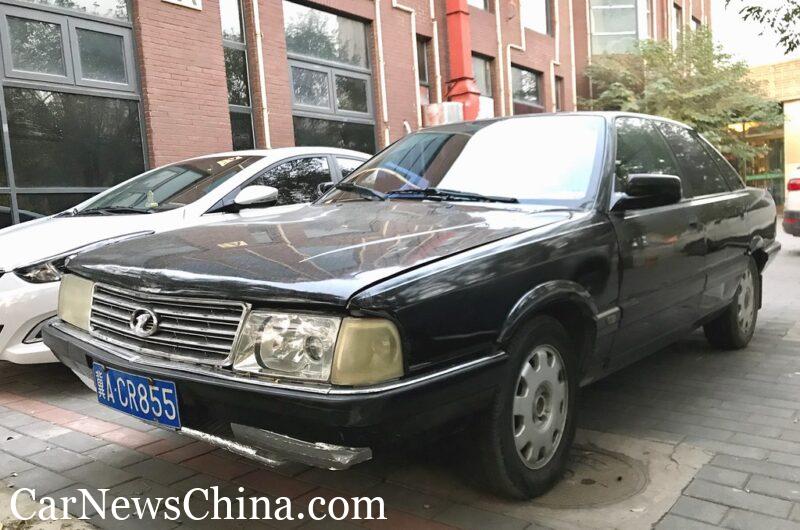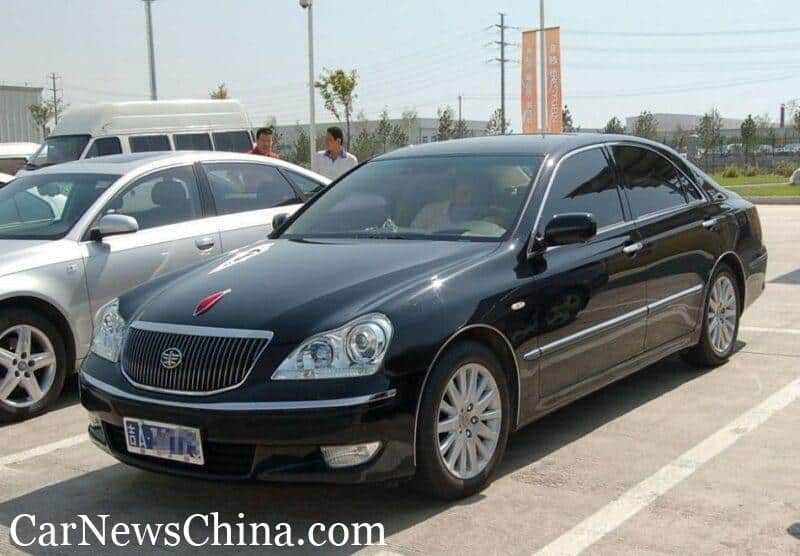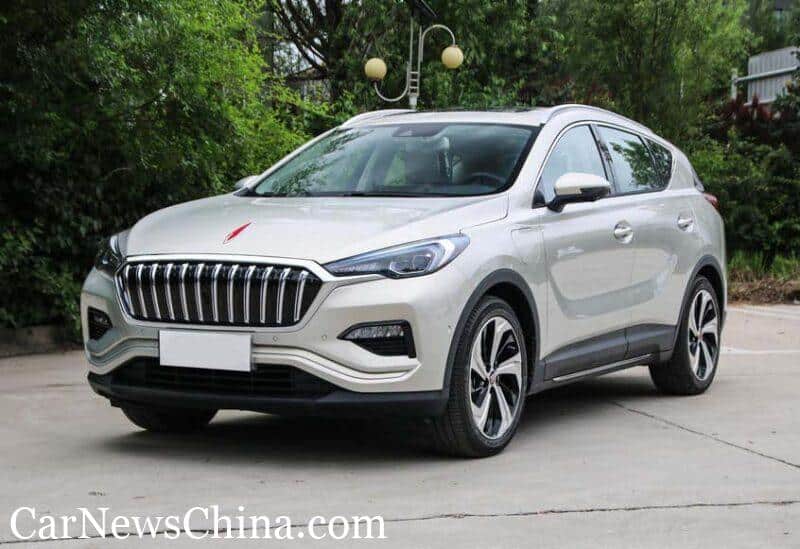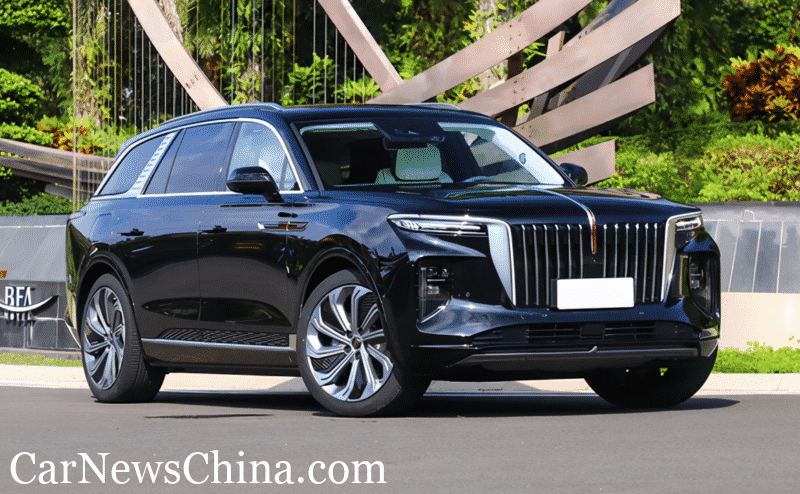The Big Read – FAW (3/5) – Hongqi and Audi, a family history
After reviewing FAW’s general history and its commercial vehicle business we’re now back to passenger cars. Today we pick up the story of China’s ‘natural treasure’ Hongqi. We left it when the brand was discontinued, but now we’ll find out how it revived with a little help from Germany.
To clarify where we are, today we’re looking at this part of the FAW conglomerate:
An arranged marriage
We left the story when the Hongqi CA770 went out of production 1981. It was a government call, because the CA770 was too old-fashioned and inefficient. Normally such a measure would spell the end of a brand, but not for Hongqi. In the following years, Hongqi keeps making the CA770 on special order only and at the same time, tries to breathe new life into the brand.
In 1982 Hongqi officials talk to Nissan, Ford, Chrysler and Audi about a collaboration or joint venture, but nothing comes from it then. Meanwhile the Hongqi engineers try out all kind of things to return to market. They reverse engineer a Nissan 280C (CA750), put a new Ford V8 in the CA770 and develop a car based on the Dodge 600. None of these designs reach production stage. However the Dodge-based car leads to Chrysler Corporation selling the 488-engine (a 2.2-litre four cylinder) production line to the Chinese. To make some money, Hongqi assembles a batch of almost thousand W123 models for Mercedes-Benz in 1987.
Meanwhile Volkswagen has set up shop in Shanghai. When the company is invited by Chinese in the early 1980s, it grabs the opportunity with both. Negotiations with several Chinese manufacturers take place, including FAW, but finally Shanghai Automotive gets the deal. Production starts with the Santana in 1985. Part of the deal is localisation of the production process and SAIC and Volkswagen need a little help with that, especially when wants to produce the Audi 100 as well.
FAW offers a solutions. Their president strikes a deal with Shanghai mayor Jiang Zemin, later China’s president and in the 1950s an engineer in FAW’s power train department. FAW offers to build the Audi car, for which there’s no capacity in Shanghai, and make parts for the Santana locally. The mayor approves and Volkswagen, reassured by the earlier negotiations with FAW, has no objections to the deal.
So after 17 years car production restarts in the Hongqi factory. From 1988 onwards it produces the Audi 100 C3 model. The arranged marriage is quite a success. The production number is less than a thousand in its first year of business, but grows to 30.000 in 1996. In addition to the mentioned Audi 100 C3, Hongqi also starts making six-cylinder 200 C3, the 100 C4 and for some time even the V8.
The love child
The marriage is fruitful in other ways as well. In 1989 FAW is alerted to the fact that VW is planning to retire some production lines in its Westmoreland plant in the United States. This plant assembles the Golf mk.2 and for FAW the assembly line represent advanced technology. The state-owned manufacturer deploys one of its officials, Lu Fuyuan, a seasoned engineer and manager with a long career within the company, to explore the possibilities.
Lu is fluent in the German and English language and possesses excellent diplomatic skills. He gets a budget of $20 million to complete his mission, while VW is asking double the money. Lu talks them down to $25 million and then get them to drop the last $5 million as well, by agreeing to import enough Audi’s from Germany so the company can avoid layoffs and factory closures. Lu takes care of the details also, some clever wording in the final contract earn FAW a fleet of cars on the Westmoreland premises and hold VW liable for waste removal costs.
Still, Volkswagen is content with the sale and when the assembly lines are installed in Changchun, a new deal is already looming on the horizon. While pre-production trials are done with Golf model, FAW en Volkswagen sign a joint venture contract in November 1990 for the Jetta model. FAW owns a small majority of the joint venture (60/40) and actual production starts a year later. The deal between Hongqi and Audi ends in 1995 and instead of renewing it, Audi joins the existing FAW-VW joint venture, while Hongqi acquires the right to build the 100 C3 under its own brand name.
In the Chinese language “Santana” may be almost synonymous with “car”, but it’s mostly used as corporate car or taxi. Arguably the Jetta becomes the real people’s car. City dwellers and rural folk alike appreciate the affordability and quality of the car, which makes it an instant classic of the Chinese car industry.
The SAIC-VW joint venture concentrates on Santana/Passat based products, while FAW-VW focuses on the Golf/Jetta line. Eventually however both joint ventures keep growing quickly and start introducing overlapping models. It’s not a problem in the booming Chinese car market, as there is room for both.
Hongqi’s extra-marital affairs
While the kid is growing up nicely, the Audi 100 C3 represents a fresh start for Hongqi as. In 1996 they start to make the car under their own name. First the car is simply known as Xiao Hongqi (small Hongqi), later the type designation Mingshi is added. Hongqi has been experimenting with all kinds of body shapes, among other things a stretched sedan, a station wagon, a pickup and a convertible. When real series production starts the sedan and various stretched versions make it to the market and are sold to the general public as well. That’s a first for the brand.

Hongqi Mingshi 
Hongqi Shijixing
The Mingshi is powered by the previously mentioned Chrysler engine. It takes the engineers for years to fit the engine to the car, but when production starts, the Mingshi easily becomes the most successful Hongqi model to date. A part of the success can be attributed simply to the Hongqi name. With success comes ambition and Hongqi wanted a new executive sedan. To raise money Honqgi, by then still a direct division of FAW, is spun off as separate company (FAW Car Co., Ltd.) and listed on the Shenzhen Stock Exchange.
With the money Hongqi lures a new lover, Ford Motor Company. Officially the new sedan is a co-development of both companies, but in practice the CA7460 is a rebadged Lincoln Town Car. Production takes place in the United States and cars are shipped as CKD kits to China, where Hongqi does the final assembly. It’s introduced in 1998 and it’s an instant failure. With only 100 units sold in 2000, the car is thereafter only made on special order for Communist Party dignitaries.
The Mingshi is still selling well. In 2000 a totally redeveloped model called Shijixing (“New Century”) with an Audi V6 engine joins the line-up and in 2004 the Mingshi gets a Nissan engine instead of the aging Chrysler design. Still, Hongqi realizes this model is also nearing the limit of its sell-by date. So the company cozies up to its new step-sister Toyota, with whom parent company FAW Group has established strong relations. This affair leads to the Hongqi HQ3, a rebadged Toyota Crown Majestic, that eventually replaces the Audi-based cars in 2007.
However the car buying public has had it with Hongqi’s infidelity. While the Mingshi and Shijixing drive sales to over 20.000 cars per year in the early 2000s, by 2008 the total sales number dwindles to a mere 500 cars. In response Hongqi presents the HQE model, modeled after the Rolls-Royce Phantom, with a self-developed V12 engine (secretly based on Audi technology). But with a price even higher than the Rolls-Royce, the HQE is not going to save the day.

Hongqi HQ3 
Hongqi HQE
The kid is alright
It’s an inevitable fact of life, there comes a time when the boy surpasses the father. So while Hongqi is struggling for sales FAW-Volkswagen constructs a second factory in Changchun, then one in Chengdu and another one Foshan. They also build an engine plant, a factory for gearboxes and set up a new joint sales organization. With the Bora and Sagitar FAW-VW has two Jetta-descendants, but it also sells the Golf and two Passat-derivatives as Magotan and CC. Of course FAW-VW gets VW’s line-up of SUV/crossovers as well and more recently, some ID-products. Audi competes with BMW and Mercedes for the top spot in the luxury segment.
Of course there are some growing pains. In the 2010s FAW-VW is one of the many joint ventures that announces its own brand. It’s an attempt to deceive the Chinese government, that insists on more technology transfer. FAW-VW introduces its brand Kaili in 2011 with the purpose of building electric passenger cars. The only model is however a thinly disguised, very old Jetta with some off the rack electric components. A few are build, none sold. I’ll tell you more about those “fake brands” in a few weeks times.
The Chinese market is now of eminent importance to Volkswagen. Together FAW-VW and SAIC-VW account for 40% of VAG’s worldwide sales. At the same time, Volkswagen is also very important to FAW, as FAW-VW gives them the highest profit margin. There is however some trouble in the family, that lingers for quite a few years. While the Audi brand performs very well, SAIC and VW want part of the premium cars to be build in Shanghai with SAIC. FAW naturally objects and there’s a stalemate that lasts until the summer of 2021. Then Audi announces a new joint venture with SAIC (in which the Germans own a majority, so the actual establishment of the company may be postponed to 2022 when that’s actually allowed) and FAW finally compromised. Most likely the SAIC-Audi’s will also be sold through the FAW-VW sales channel.
A happier announcement reaches the world a year earlier. FAW-VW makes Hongqi and Vokswagen grandparents as it spins off Jetta as separate brand. It’s an effort to win back market share at the lower end of the market, where Volkswagen was slowly losing ground to the increasingly competitive Chinese manufacturers. The program currently consists of the VA3 (a far-reaching development of the VW Jetta from 1984!), the VS5 (rebadged Seat Ateca) and VS7 (rebadged Seat Tarracco). The market introduction has been relatively successful so far.
Making amends
The final chapter in this family saga tells us how Hongqi redeems itself for the indiscretions of the past. Of course Hongqi cannot shrug of everything all at once. Like the HQ3, its successor H7 is still based on the Toyota Crown. And Hongqi turns to little brother Besturn for the technical base of the smaller H5 and E-HS3. But meanwhile is trying to make amends with its former partner Audi. The first attempt is the L-series sedan, Hongqi’s new executive limousine. The V8 or V12 powered car, in its smallest form also available for the consumer, shares some technologies with larger Audi models and revisits the classic design of the CA770.
FAW president Zhang Xiaojun recognizes Hongqi’s symbolic importance for the FAW Group already in 2014, when he tells the press that only when Hongqi is successful in the private car market will FAW consider itself a real success. But the Group first has to hit rock bottom. In 2015 Zhang, along with some eighty managers from FAW and Hongqi are arrested on corruption charges.

Hongqi E-HS3 
Hongqi E-HS9 
Hongqi H9 Plus 
Hongqi L5 
Hongqi L9, the stretched, V12-powered presidential car
In 2017 Xu Liuping, the president of the state-owned China South Industries Group Corporation, owner of Changan Automobile, is named president of FAW. He makes Hongqi his top priority of reviving FAW. The once great brand must become the ultimate in premium motoring again. In addition to its existing line-up Hongqi introduces several new models in quick succession in 2019 and 2020. These models (HS5/HS7/H9 and E-HS9) share a some basic technologies with Audi’s MLB-based cars. Future products will slowly distance themselves from the German heritage and be on self-developed platforms shared with Bestune.
The renewal of the program has achieved unprecedented commercial success. In just three years, Hongqi progresses from ‘Chinese faded glory’ to one of the hippest premium brands on the market. From 20.000 cars in 2017 to 200,000 units in 2020, now that is an impressive increase. And this very typically Chinese brand now thinks about export. The first E-HS9’s have been sold in Norway. So whoever thought this family saga would end in tears, will be disappointed. No messy divorce, no disowned children, all the family members happily land on their feet.
Next week
We take a step down in the FAW lineup and explore its mainstream offerings under the Bestune brand. It is preceded by long history about tropical Rivieras and Mazda’s, so it promises to be another interesting read.

